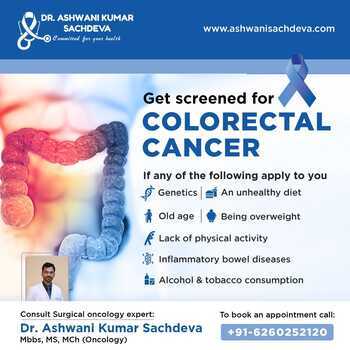Breast cancer arises in the milk producing ducts or lobules of the breast. Females are most commonly affected by breast cancer, although it can affect the male breast also rarely. Breast cancer is the most common cancer among females worldwide and is also the 5th most common cause of cancer deaths.
Breast Cancer Causes
Breast cancer can be caused by a combination of factors, including genetic mutations, hormonal influences, and environmental exposures.
Genetic mutations, such as alterations in the BRCA1 and BRCA2 genes, can significantly increase the risk of developing breast cancer. These mutations can be inherited from parents and are more common in individuals with a family history of breast or ovarian cancer.
Hormonal factors also play a crucial role in breast cancer development. Increased levels of estrogen over time, which can occur due to factors like early onset of menstruation, late onset of menopause, or hormone replacement therapy, have been linked to a higher risk of breast cancer.
Certain lifestyle and environmental factors can also contribute to breast cancer risk. Obesity, lack of physical activity, and a diet high in processed foods and saturated fats have been associated with an increased risk. Heavy alcohol consumption can further elevate this risk, along with exposure to radiation, such as during previous cancer treatments like radiation therapy.
Reproductive factors also impact breast cancer risk. Women who have never been pregnant or who had their first pregnancy after age 30 may have a slightly higher risk. Conversely, breastfeeding has been shown to have a protective effect against breast cancer.
Gender -While breast cancer can occur in men, it is much more common in women, primarily due to differences in breast tissue composition and hormonal influences.
Other risk factors include aging (risk increases with age), personal history of breast cancer or certain non-cancerous breast diseases, dense breast tissue, and certain benign breast conditions.
Breast cancer Symptoms
Breast cancer can present with different symptoms depending on the stage at which it is diagnosed. Feeling of lump in the breast or the axilla is one of the most common symptoms. Understanding the symptoms of breast cancer at different stages is crucial for early detection and effective treatment. here’s a complete list of symptoms according to the stage:
- Early Stage: In the early stages of breast cancer, symptoms may not be noticeable for some individuals. However, common early signs can include:
- A painless lump or mass in the breast or underarm area
- Changes in breast size, shape, or texture
- Skin changes such as redness, swelling, or dimpling
- Nipple changes like inversion, scaling, or discharge (other than breast milk)
- Intermediate Stage: As breast cancer progresses, symptoms may become more apparent. Additional signs in the intermediate stage can include:
- Thickening or swelling of a part of the breast
- Skin irritation or dimpling that resembles an orange peel
- Nipple tenderness or pain
- Unexplained changes in breast appearance or texture
- Advanced Stage (Metastatic): In advanced stages where cancer has spread beyond the breast and nearby lymph nodes, symptoms may include:
- Bone pain or tenderness
- Persistent headaches or neurological symptoms if cancer has spread to the brain
- Shortness of breath or chest pain if cancer has spread to the lungs or chest wall
- Jaundice (yellowing of the skin and eyes) if cancer affects the liver
- Unexplained weight loss, fatigue, or generalized weakness
Not all symptoms are necessarily indicative of breast cancer, and some symptoms can be due to benign conditions. However, any unusual changes in the breast, nipple, or surrounding areas should be promptly evaluated by a healthcare professional.
Breast cancer Diagnosis
In the early stages, when symptoms like breast lumps are detected, diagnostic methods include mammograms, ultrasound scans, and breast biopsies.
Mammograms use X-rays to detect abnormalities in breast tissue, while ultrasounds create detailed images using sound waves. Biopsies involve removing a sample of breast tissue for examination under a microscope to confirm the presence of cancer cells.
For advanced stages with suspected metastasis, doctors may order bone scans, CT scans, or PET scans to identify cancer spread to distant organs like bones, lungs, or liver.
Breast cancer Treatment
Breast cancer treatment has evolved significantly over the years, offering a range of advanced therapies tailored to different stages and subtypes of the disease. Healthcare professionals play a crucial role in understanding these treatments and guiding patients through their breast cancer journey.
- Surgery: Surgical interventions for breast cancer have become increasingly refined. Breast-conserving surgeries like lumpectomy are preferred when feasible, preserving breast tissue while removing the tumor. Advances in oncoplastic surgery combine oncologic principles with plastic surgery techniques for better cosmetic outcomes after breast-conserving surgery. Mastectomy techniques, including skin-sparing and nipple-sparing mastectomies, have also advanced to preserve breast aesthetics.
- Radiation Therapy: Modern radiation techniques such as intensity-modulated radiation therapy (IMRT) and proton therapy deliver precise radiation doses to tumor sites while minimizing exposure to surrounding healthy tissue. Hypofractionated radiation schedules have shortened treatment courses without compromising efficacy, improving patient convenience and compliance.
- Chemotherapy: Targeted chemotherapy drugs, including anthracyclines, taxanes, and platinum agents, are used based on tumor characteristics such as hormone receptor status, HER2 expression, and genetic profiles. Neoadjuvant chemotherapy is increasingly used to shrink tumors before surgery, allowing for breast-conserving procedures in initially unresectable tumors.
- Hormone Therapy: Endocrine therapies such as selective estrogen receptor modulators (SERMs), aromatase inhibitors (AIs), and selective estrogen receptor degraders (SERDs) target hormone receptor-positive breast cancers. Combination therapies with targeted agents like CDK4/6 inhibitors enhance treatment efficacy and delay disease progression.
- Targeted Therapy: HER2-targeted therapies like trastuzumab, pertuzumab, and ado-trastuzumab emtansine (T-DM1) have revolutionized the management of HER2-positive breast cancers, improving survival outcomes. Emerging targeted therapies, including PARP inhibitors for BRCA-mutated cancers, show promise in specific subgroups.
- Immunotherapy: While still investigational in breast cancer, immune checkpoint inhibitors like pembrolizumab and atezolizumab are being studied in combination with chemotherapy or targeted therapies, particularly in triple-negative breast cancer (TNBC) subtypes.
- Multidisciplinary Approach: Collaboration among surgical oncologists, medical oncologists, radiation oncologists, pathologists, radiologists, genetic counselors, and supportive care teams ensures comprehensive, patient-centered care. Genetic testing and counseling for hereditary breast cancer syndromes guide treatment decisions and inform risk management strategies.
Continual advancements in precision medicine, molecular profiling, immunotherapy, and supportive care modalities are shaping the future of breast cancer treatment.
Breast Cancer Survival Rates
The 5-year relative survival rate for breast cancer is around 90%, meaning that about 90 out of 100 people diagnosed with breast cancer are alive 5 years after diagnosis.
Survival rates vary significantly by stage:
- Localized (Stage I and II): With early detection and localized tumors, the 5-year survival rate is high, often exceeding 90%.
- Regional (Stage III): If cancer has spread to nearby lymph nodes or tissues, the 5-year survival rate ranges from 72% to 85%.
- Distant (Stage IV): When cancer has metastasized to distant organs like bones, lungs, or liver, the 5-year survival rate decreases to around 28%.
Besides cancer characteristics, factors like age, overall health, genetics, treatment adherence, and response to treatment impact survival rates.
Advances in early detection, personalized treatments, supportive care, and ongoing research continue to improve breast cancer outcomes, offering hope to patients and their loved ones.











 and then
and then